solarpanel
Latest
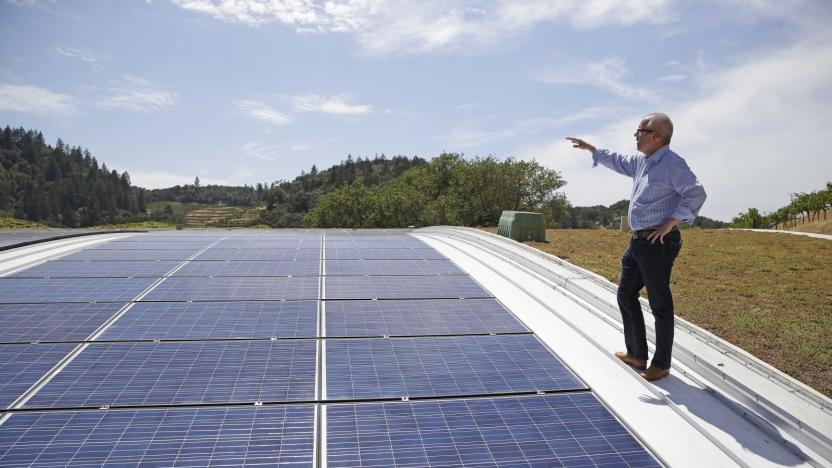
Stanford AI found nearly every solar panel in the US
It would be impractical to count the number of solar panels in the US by hand, and that makes it difficult to gauge just how far the technology has really spread. Stanford researchers have a solution: make AI do the heavy lifting. They've crafted a deep learning system, DeepSolar, that mapped every visible solar panel in the US -- about 1.47 million of them, if you're wondering. The neural network-based approach turns satellite imagery into tiles, classifies every pixel within those tiles, and combines those pixels to determine if there are solar panels in a given area, whether they're large solar farms or individual rooftop installations.
Jon Fingas12.19.2018
California gives final approval to code requiring solar on new homes
While there was little doubt it would happen, it's now a done deal: California will require solar panels on most new homes. Officials at a December 5th Building Standards Commission meeting have voted for the new code, providing the last bit of approval necessary for the policy to take effect. New homes, condos and low-rise apartments will need eco-friendly power generation on their rooftops from January 1st, 2020 onward. The only exclusions are for homes that are either blocked by taller objects (like trees and tall buildings) or don't have room for panels.
Jon Fingas12.05.2018
Hyundai and Kia will outfit their cars with solar panels
Solar panels on cars aren't just reserved for luxury brands or experimental vehicles. Hyundai and Kia have laid out plans to equip "selected" cars with solar panels on their roofs or hoods. They'll help charge batteries for electric vehicles and hybrids, but they'll also be useful for combustion-only vehicles. You won't have to settle for solar panels blocking your view of the sky above, either.
Jon Fingas11.01.2018
Tesla Powerwall systems help some Hawaii schools beat the heat
Tesla shipped Powerwall batteries to Puerto Rico last fall -- and to Australia last December -- and now it's helping Hawaii. Again. Specifically, it supplied equipment to the island state to help schools combat Hawaii's tropical temperature and relative humidity. Roadshow reports that Tesla shipped some 300 batteries and solar panels to the island as a way of keeping schools cool using renewable energy. This was after state government challenged the local department of education to cool an additional 1,000 classrooms without bumping electricity usage.
Timothy J. Seppala02.26.2018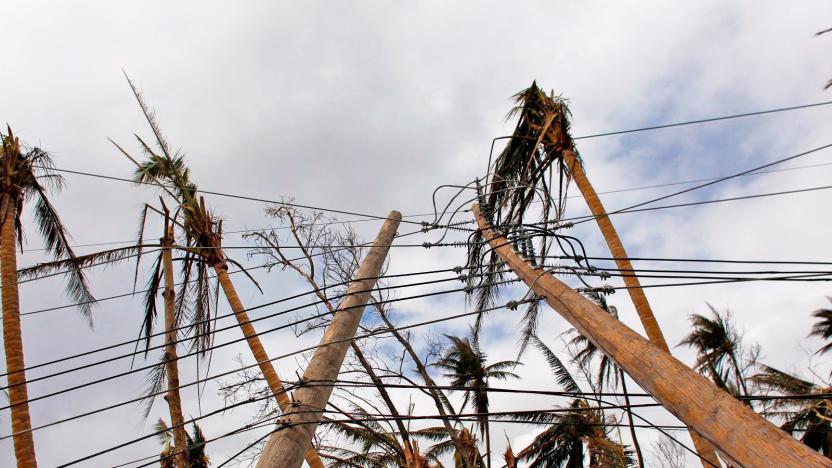
Puerto Rico governor will discuss Tesla solar systems with Elon Musk
Following hurricanes Irma and Maria, millions of Puerto Rico residents were left without electricity and it's expected to take months for power to be restored. Well one person mused on Twitter whether Elon Musk could help out by rebuilding the island's electricity grid with solar and battery systems and Musk responded that it wasn't out of the realm of possibility.
Mallory Locklear10.06.2017
Solar power is the fastest growing source of global energy
Solar power was the fastest-growing source of global energy last year, overtaking growth from all other forms, according to the International Energy Agency (IEA). The spurt is largely attributed to lower prices and changing government policies encouraging a shift away from traditional power sources, such as coal. China, for example, has played an important role in renewable energy's prominence, accounting for almost half of all new solar panels installed worldwide.
Rachel England10.04.2017
IKEA’s selling home storage batteries for its solar panels
A rooftop of solar panels generating clean energy is great and all, but having somewhere to squirrel away that free juice is even better. After stepping into the shade for a good few months, IKEA began selling solar panels again last year with new teammate Solarcentury (a company that specialises in solar stuff). Today, the meatball-mad retailer is adding another piece of the off-grid puzzle to its shelves: A home storage battery.
Jamie Rigg08.02.2017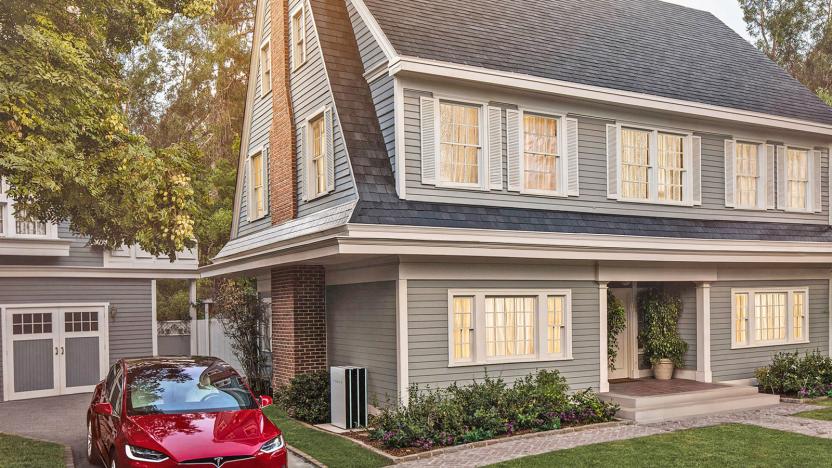
Tesla's Solar Roof is available for pre-order
Tesla didn't quite fulfill its promise to start Solar Roof sales in April, but you thankfully haven't had to wait that much longer to pull the trigger. As of today, you can pre-order Tesla's stealthy solar power cells in textured or smooth variants ahead of the first US installations in the summer (2018 elsewhere). While the price will vary depending on your home, of course, the company estimates that a "typical" buyer will pay about $21.85 per square foot instead of $24.50 for a regular roof. Not that there will be much mystery regardless of what you pay -- Tesla is offering a cost calculator to figure out your real-world expenses.
Jon Fingas05.10.2017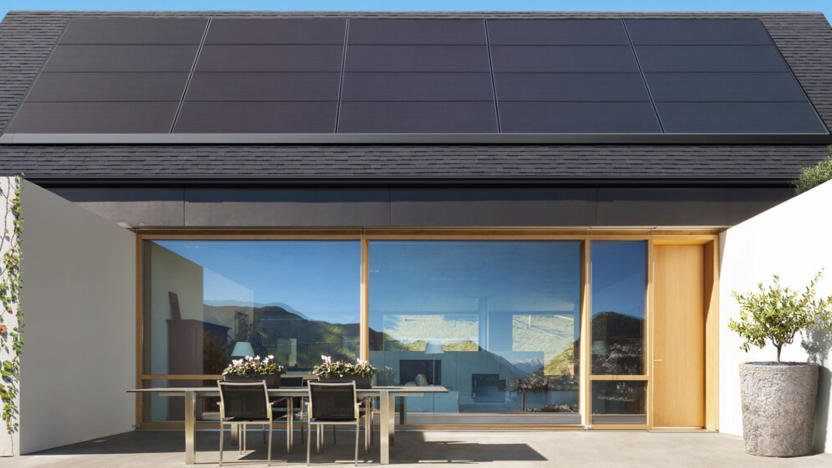
Tesla's sleek solar panels are easier to install on your roof
Tesla's home energy efforts might be centered around its solar roofs, but it knows that not everyone can (or wants to) rip up their roof just to bring renewable energy to their home. To that end, the company is offering a first glimpse at Panasonic-made solar panels that would go on top of your existing roof. Unlike many aftermarket options, this would be relatively slick and unintrusive -- the panels have "integrated front skirts and no visible mounting hardware." While it'll be patently obvious that you have solar energy on your roof, it shouldn't be the eyesore you sometimes get with conventional designs.
Jon Fingas04.09.2017
BioLite's new off-the-grid gear doubles down on power and light
BioLite released most of its 2017 product line today, spearheaded by the new and improved CampStove 2. All the products share common design features, centered around either battery improvements, expanded lighting possibilities, or both. Along with the redesigned stove, which now includes onboard power storage, there's a double-wide solar panel, heavy duty portable batteries and, in the spirit of keeping you charged up, a coffee press. The company has also expanded its NanoGrid lighting system by adding a collapsible and hangable diffusion light, a scaled-down version of the daisy-chainable SiteLight series and the long-awaited arrival of the BaseLantern.
Jon Turi03.01.2017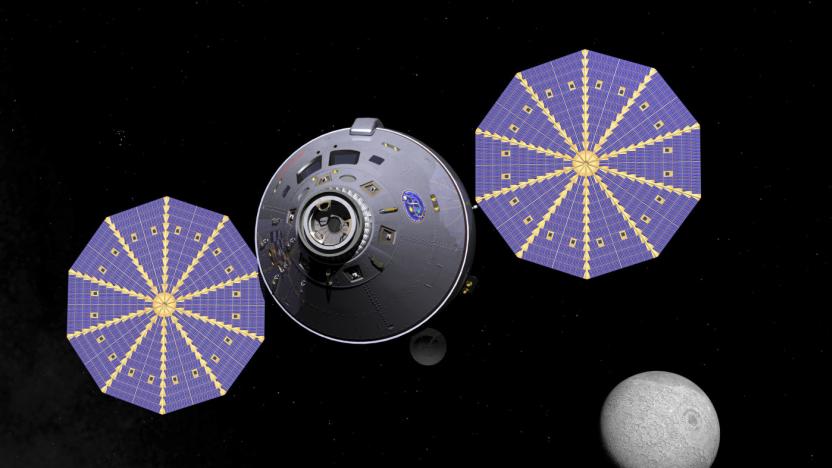
NASA picks solar power candidates for deep space missions
NASA is going to need solar power if it wants to keep its future deep space missions running, and that means getting someone to build that light-gathering technology. Fortunately, the agency has some partners lined up. It just picked four solar power technology proposals that could find their way into spacecraft traveling as far as Mars. The outfits negotiating deals are definitely ones you'll know -- ATK, Boeing, Johns Hopkins University and NASA's own Jet Propulsion Laboratory are all developing systems that collect solar energy in the unforgiving conditions beyond Earth.
Jon Fingas03.15.2016
Moth eyes inspire solar cells that work indoors
As a rule, most solar cells need to catch direct sunlight. Even those that work indoors can only do so much to generate power from artificial light sources. However, British researchers have found a clever (and decidedly) unusual way to harvest energy while inside: by imitating moths. They've created a graphene-based material that traps electromagnetic waves much like a moth's eye, making it one of the most energy-absorbent substances to date. With the right antennas, it could produce energy from not just sunlight, but any device that emits microwave or radio waves -- your smartphone could help power your smartwatch.
Jon Fingas02.29.2016
BioLite's latest gear includes a stove, lamp and a pair of solar panels
The smell of burning wood from pot belly stoves and fireplaces is noticeable in some Brooklyn neighborhoods during the winter, but down underneath the Manhattan Bridge overpass at BioLite headquarters it's business as usual. The company's been hard at work updating last year's line of off-the-grid power and cooking gear. That means plenty of design, testing and the occasional conflagration in its "burn lab" to perfect its products. The result of all this sweat and ash includes a new CookStove, PowerLight Mini and a pair of solar panels, which you can pick up at BioLite's website.
Jon Turi02.15.2016
LG plans to triple its solar panel production by 2020
While LG's consumer electronics business has been pumping out high-res TVs and other gadgets, its solar panel division has apparently been making plans for its expansion, as well. The company has revealed that it's spending $435 million to add more six more production lines to its facility in Korea. By doing so, it hopes to increase its annual solar cell production from 1GW to 1.8GW by 2018 and ultimately to 3GW by 2020. LG says 3GW is equivalent to the yearly power consumption of a million households, hence the increase in its solar cell production could change the way a lot of people use electricity. "LG has been actively involved in the solar energy business for two decades," company president Lee Sang-bong said, "and we believe that mainstream consumers are more than ready to give solar more serious consideration."
Mariella Moon01.13.2016
Stanford researchers 'cool' sunlight to improve solar cell efficiency
A team of researchers from Stanford University have devised an ingenious means of boosting the efficiency of solar panels by exploiting a fundamental physics phenomenon. Solar panels lose efficiency as they heat up. Just as the top of your head radiates excess body heat as infrared light, the researchers have developed a translucent overlay comprised of patterned silica that does the same for solar panels. The overlay separates the visible spectrum of light (which generates electricity) from its thermal radiation (aka heat), effectively "cooling" the incoming light, radiating the heat away from the panel while allowing more photons to be converted into electricity. The team, led by Stanford professor Shanhui Fan, recently published their findings in the journal, Proceedings of the National Academy of Sciences.
Andrew Tarantola09.22.2015
Google's making it easy for you to get solar panels onto your roof
Adding solar panels to your roof can be frustrating, since it's often difficult to know if your home receives enough light to justify the investment. Google Maps, however, has satellite, navigation and sunlight data for every property in the world, so it's ideally placed to tell you how many rays hit your crib on a daily basis. That's why the firm is launching Sunroof, a database of how much solar energy hits each building in a city, helping people work out if it's worth the effort. Sunroof is intended as a "treasure map" for future green energy projects, telling you how much of a saving you'd make and how long it'd take to make back your initial outlay.
Daniel Cooper08.17.2015
Army scientists build smaller, tougher, cheaper solar cells
Army researchers at the Redstone Arsenal have announced a significant breakthrough in solar energy production. They've created a photovoltaic solar panel that is smaller, more robust and less expensive to build and operate than any other panel currently available. Virtually every solar panel currently in existence relies on a pure silicon construction, however the band gap (the wavelength of light that it can actually be absorbed and converted into electricity) of single crystal silicon is exceedingly narrow compared to the full spectrum shining down from the Sun. Not only does this mean that conventional panels are missing out on potential power, the ultraviolet and infrared wavelengths actively damage the panels by causing them to heat, warp and crack.
Andrew Tarantola07.06.2015
Eton FRX3: Emergency power for your iPhone when you need it the most
If there's anything that nature teaches us, it's that our highly technological society is just an extended power outage away from complete chaos. Last fall's Hurricane Sandy left many on the East Coast of the US without power for weeks. No power at the home or office means no power for your iPhone, which means you have no way to talk to relatives, friends or first responders if the mobile network is still up (which it usually is). The Eton FRX3 (US$59.99) is primarily an emergency radio, but it also has power-generating features to keep your iPhone going when the power's down. Design The Eton FRX3 is probably one of the strangest accessories I've ever reviewed, since it's not specifically made for the purpose of working with Apple devices. Design-wise it's a hardy looking little device that does not look like a radio at all. It's a black plastic box about 5.5" wide, 6.5" tall, and about 1.6" thick, with a rather industrial-looking "X" design and a silver and yellow crank on the front. There's also a version in red if you prefer. That crank powers a dynamo ("hand turbine") that is used in concert with a small solar panel on the top of the device to charge an internal NiMH battery pack. You can also power the radio off of three standard AA batteries, or by plugging in an external power source through an included USB to micro-USB cable. That solar panel on top has a glow-in-the-dark bezel around it, helpful for those situations where the power has just gone out and you're trying to find the FRX3. %Gallery-176877% There's a backlit LCD panel that shows the time (this can also be used as an alarm clock), battery status, band (AM/FM/WB) and station frequency. Under the solar cell enhanced handle is a group of buttons used to set the clock and alarm. On the front of the FRX3 are buttons to switch between the dynamo-powered rechargeable batteries and AA batteries, a master power switch, and a slider switch to go between bands. There are two large and easy-to-turn silver knobs that control volume and tuning. Eton includes a wrist strap for carrying the radio, although I think it would be easier just to use the built-in handle. On the right side of the case looking from the front are three LED bulbs -- two provide a bright white emergency flashlight, while the third is a flashing red LED to attract attention. The back of the FRX3 has a niche for an extendable antenna, a door covering an AUX port, a headphone jack, a DC-in micro-USB port, and a USB port for charging your iPhone. There's also a separate door for accessing the rechargeable battery pack and AA batteries (if used). Functionality For iPhone users, the biggest question is going to be how much of a charge you can give your phone using the FRX3. To charge your phone, you'll use your standard iPhone USB to Lightning or USB to 30-pin Dock connector cable, and plug the USB end into the "Cell" port on the back of the FRX3. You then press the CELL button located under the handle to start dumping the charge from the NiMH battery to your iPhone. That battery pack contains 600 mAh of charge, while fully charging an iPhone 5 takes about 1434 mAh. You'll be able to recharge your iPhone less than halfway with the FRX3, but that may be enough to make a call to a worried relative, check on a close friend, or contact first responders. Once the FRX3 battery pack is dead, it's time to recharge it. Unless you want to build up arm muscle mass by turning the crank for a while, you'll most likely want to let the sun do the charging -- if it's sunny outside. Unfortunately, that little solar panel takes about 10 hours to fully charge the FRX3 battery, so if you really need juice quickly, your arms are going to get a workout. On the plus side, that crank turns pretty easily, so it's not going wear you out too badly and it may give bored kids something to do while you're waiting for the power to come back on. You do not want to turn the dynamo crank while your iPhone is attached; instead, you disconnect the phone, charge the FRX3 battery up with the crank and solar panel, and then connect to the iPhone for charging. The radio in the FRX3 works well, if you realize that it's not meant for entertainment purposes. It's designed for listening to news and NWS weather reports. Of the seven weather band channels, you'll need to flick between them until you find the one with the strongest signal. Where I live in the southern suburbs of Denver, only one weather band channel was accessible. You can switch to your local AM and FM stations as well. Listening to music on the FRX3 is almost painful; the sound quality reminds me of the radio that was in my mid-1970s Chevy Vega wagon, and that's not a good memory. But as I said, this is an emergency radio and you're most likely not going to listen to music on it. The radio operates for three to four hours with a full charge and at low volume. In emergency situations, you may want to just turn it on every hour or so to get an update, then turn it back off. The dynamo crank provides about 5 to 7 minutes of radio capability or 20 minutes of flashlight use for every 90 seconds of hand cranking. Calculating, it would take approximately an hour of cranking to get the battery fully charged back up. Conclusion Everyone should have a way to listen to emergency radio reports when the power is out, and in that respect the Eton FRX3 excels by providing multiple ways of recharging the device's NiMH battery pack. However, I would use the FRX3 as an iPhone charger of last resort due to its low capacity. If you're truly concerned about keeping your iPhone up and running in an emergency, you might want to invest in a Mophie Juice Pack Powerstation Pro ($99.95) with a 6000 mAh rechargeable battery that can fully recharge your iPhone about four times. What you really want to buy the FRX3 for is the other emergency preparedness features -- the LED flashlight and the multiband radio. In a severe emergency, those features are probably going to be much more important to you than being able to play Temple Run 2 on your iPhone.
Steve Sande01.21.2013
Fraunhofer black silicon could catch more energy from infrared light, go green with sulfur
Generating solar power from the infrared spectrum, or even nearby frequencies, has proven difficult in spite of a quarter of the Sun's energy passing through those wavelengths. The Fraunhofer Institute for Telecommunications may have jumped that hurdle to efficiency through sulfur -- one of the very materials that solar energy often helps eliminate. By irradiating ordinary silicon through femtosecond-level laser pulses within a sulfuric atmosphere, the technique melds sulfur with silicon and makes it easier for infrared light electrons to build into the frenzy needed for conducting electricity. The black-tinted silicon that results from the process is still in the early stages and needs improvements to automation and refinement to become a real product, but there's every intention of making that happen: Fraunhofer plans a spinoff to market finished laser systems for solar cell builders who want their own black silicon. If all goes well, the darker shade of solar panels could lead to a brighter future for clean energy.
Jon Fingas10.04.2012
Inhabitat's Week in Green: ECOLAR house, transparent solar panel and Star Wars terrariums
Each week our friends at Inhabitat recap the week's most interesting green developments and clean tech news for us -- it's the Week in Green. For the past two weeks Inhabitat has been reporting live from the Solar Decathlon Europe in Madrid, where 18 student teams from around the world have been competing for the title of the world's most efficient solar-powered prefab house. As usual, suspense was running high in the final days of the competition, and we're excited to announce that Team Rhône-Alpes' Canopea House has been named this year's winner! The beautiful modular house took top honors in the architecture and sustainability categories, and it features a 10.7 kW photovoltaic array on the roof that produces more than enough energy to power the home. Some of the other standouts at the Solar Decathlon Europe include Germany's ECOLAR House, which features a flexible, modular design that can expand or shrink to accommodate the needs of its owners. It came as no surprise that the German team was tops in the engineering category, and the team incorporated hemp insulation in the floors, walls and ceiling to prevent thermal loss. Team Andalucia's Patio 2.12 House, which consists of four separate prefabricated modules built around an interior courtyard, scored high marks for energy efficiency and innovation. And although Italy's MED in Italy House might not look like much on the outside, step inside and you'll enter a different world altogether. The highly efficient home features a central courtyard and a rooftop photovoltaic array that generates about 9.33 kWh of energy per year -- roughly double what it needs. Team Rome also added wall layers that can be filled with heavy materials to provide high thermal mass once the home is installed.
Inhabitat09.30.2012